There are so many forms of energy that exist in nature. Out of all, today, we are only interested in the form of energy that we harness from the nucleus of an atom i.e Nuclear energy. Not to mention, there are two ways to harness nuclear energy from the nucleus of an atom. These are nuclear fission and nuclear fusion reactions.
Just because of the demand for the topic, we are only interested in these two. So, what is the difference between nuclear fission and nuclear fusion? The primary difference between fission and fusion is that nuclear fission is a process during which a heavier nucleus of an atom (say plutonium) breaks into two lighter nuclei.
On the other hand, nuclear fusion is a process during which lighter elements fuse together to form heavier elements. As a matter of fact, in this exclusive article, I am going to get you through each and every detail regarding these two. But, before going into the deep discussion, let me give you a brief review of the two in a tabular form. Let’s dive right in!!!
Fission vs Fusion
| Fission | Fusion | |
| 1. | Splitting of a larger nucleus to form smaller nuclei. | Merger of smaller nuclei to form a larger nucleus. |
| 2. | Requires a very little amount of energy to split atoms. | Requires a very large amount of energy to merge or fuse atoms. |
| 3. | The energy that we harness from nuclear fission is very low as compared to nuclear fusion. | The energy that we harness from nuclear fusion is very high as compared to nuclear fission. |
| 4. | All bi-products of the fission reaction are highly radioactive in nature. | All bi-products of the fusion reaction are very less radioactive in nature. |
| 5. | This process does not require high temperature and high-pressure density to split atoms. | On the contrary, this process requires very high temperature and high-pressure density to fuse atoms. |
| 6. | There is no natural process that occurs due to nuclear fission reactions. | Stars like the Sun shines due to the process of nuclear fusion. |
| 7. | For the fission reaction to be exothermic in nature, the element in use should be the heaviest such as Uranium. | For the fusion reaction to be exothermic in nature, the element in use should be the lightest such as hydrogen or its isotopes. |
| 8. | Atomic bomb or simply nuclear bomb would be the perfect example of the uncontrolled chain reaction of nuclear fission. | A thermonuclear bomb or simply a hydrogen bomb would be the perfect example of the uncontrolled chain reaction in nuclear fusion. |
| 9. | Electricity generated in the nuclear power plant would be the perfect example of the controlled chain reaction of nuclear fission. | Sadly, a nuclear reactor that could sustain a nuclear fusion reaction is still in its development phase. |
What is Nuclear Fission?
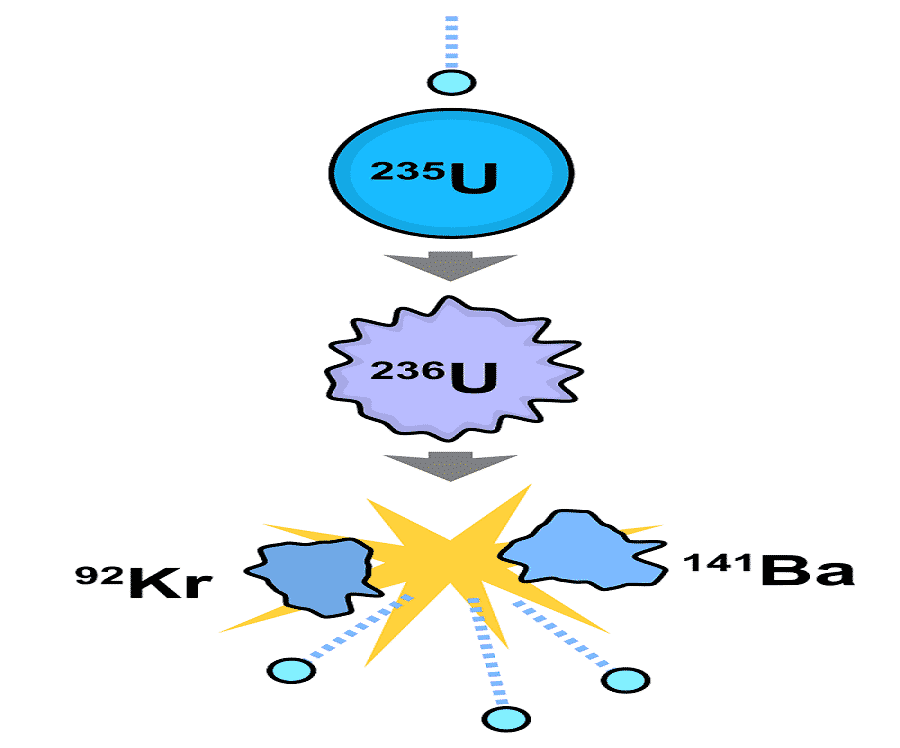
The process of splitting atoms by bombarding them with neutrons to harness energy is known as nuclear fission. To put it differently, this is a process in which a heavier nucleus of an atom (say plutonium) breaks into two lighter nuclei. See the above image for proper understanding.
Not to mention, apart from producing an enormous amount of energy, nuclear fission also produces a large number of highly radioactive bi-products and neutrons. In fact, these newly created neutrons are also responsible for the formation of multiple nuclear fission reactions.
Additionally, for the fission reaction to be exothermic in nature, the element in use should be the heaviest such as Uranium. Ahh!!! Don’t get me wrong. I mean there is a catch!
Well, no doubt, lighter elements like hydrogen are also fissionable. But, there will be an issue i.e the energy generated by splitting the hydrogen atoms would be endothermic in nature.
Must Read: Top 6 Sources of Mechanical Energy You Should Know
How does nuclear fission work?
Nuclear fission works sustainably due to the occurrence of multiple chain reactions during the splitting of atoms. For example, when a uranium-235 is bombarded with a neutron, it splits into two smaller nuclei releasing a large amount of energy with a number of newly created neutrons which further collides with another uranium atom and splits it into two.
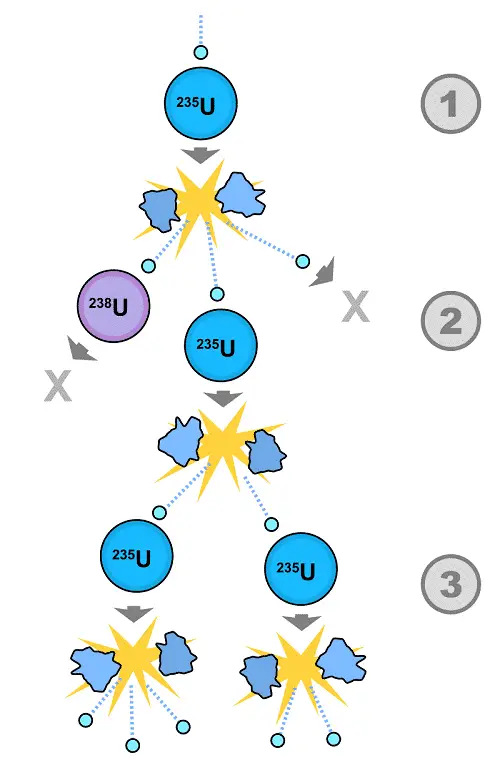
And, the process goes on due to the generation of new neutrons in every successive fission reaction. Therefore, one can conclude that when a single nuclear fission reaction causes more than one successive nuclear reaction is known as the chain reaction in nuclear fission.
Not to mention, there are two different types of chain reactions that occur during the process of nuclear fission. These are uncontrolled chain reactions and controlled chain reactions. Let’s get to know a bit about them. Therefore, keep reading!!!
Must read: What is Mechanical Energy? – Definition, Facts, Types & Examples
Uncontrolled Chain Reaction in Nuclear Fission
According to the nuclear fission definition, when a large amount of energy is produced at once by splitting atoms, a process in the world of nuclear physics is known as an Uncontrolled chain reaction in nuclear fission.
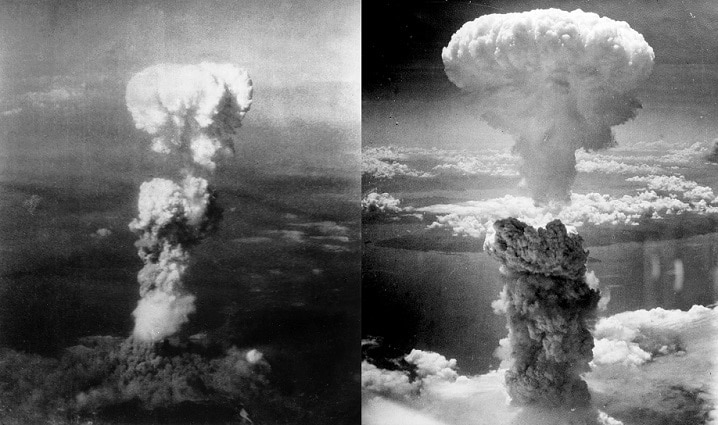
Hiroshima and Nagasaki atomic bombings would be the perfect example of an uncontrolled chain reaction where energy was harnessed either by splitting uranium or plutonium atoms.
Controlled Chain Reaction in Nuclear Fission
Similarly, according to the nuclear fission definition, when the energy is slowly produced by splitting atoms in a controlled or sustained environment, a process in the world of physics is known as a controlled chain reaction in nuclear fission.
Editor’s Choice: Top 6 Primary Sources of Electricity Generation in the World
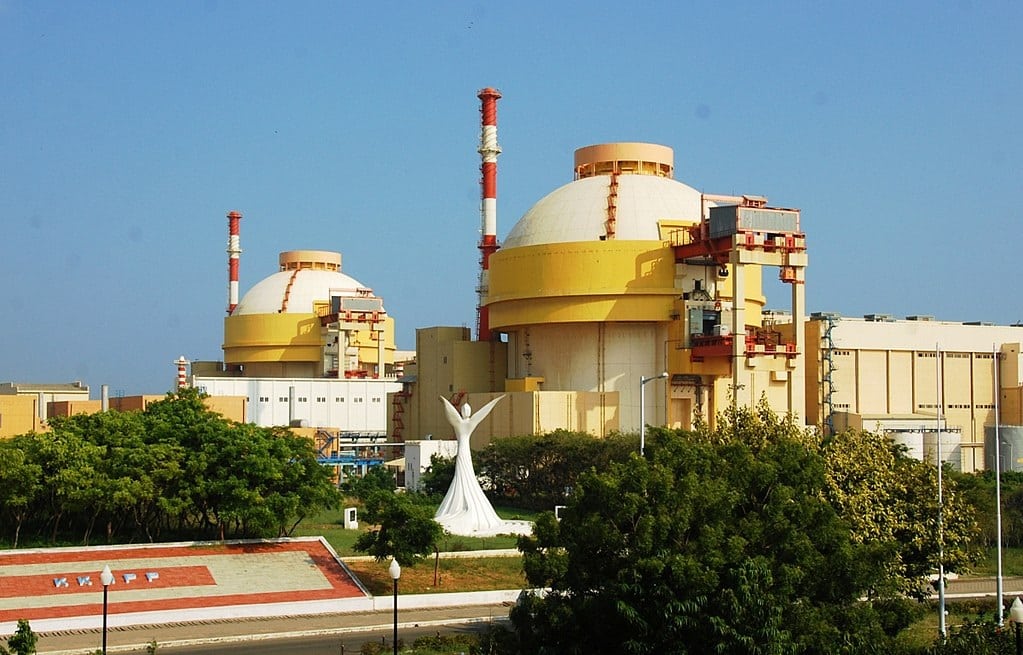
Electricity produced in the nuclear power plant would be the perfect example of the controlled chain reaction where energy is slowly harnessed either by splitting uranium or plutonium atoms.
In fact, according to the International Atomic Energy Agency, about 10% of the global electricity is produced via controlled nuclear fission power plants.
Applications of Nuclear Fission in Everyday Life
If you think you can’t relate to nuclear fission applications in daily life. Well, here is your chance to think again!
- Nuclear Weapons
- Nuclear power Electricity plant
- Space Exploration
- Nuclear Medicine
- Food processing
- Agricultural Uses
- In water desalination projects
- Industrial Applications
- Tracer technology, etc.
Check out: What is Potential Energy? – Definition, Facts, Types & Examples
Advantages of Nuclear Fission
Here is a list of some of the advantages of nuclear fission reactions.
- Nuclear fission enhances national security.
- It is one of the lowest carbon energy resources only after hydroelectricity.
- This process requires a very less amount of energy to split atoms as compared to a nuclear fusion reaction.
- This process does not require high temperature and high-pressure density to split atoms as compared to a nuclear fusion reaction.
- It comes in the list of one of the most reliable sources of energy.
- Moreover, the process of nuclear fission helps us to reduce greenhouse gas emissions, etc.
Disadvantages of Nuclear Fission
Here is a list of some of the disadvantages of nuclear fission reactions.
- The danger of accidents like Japan’s Fukushima Daiichi nuclear disaster.
- The nuclear power plant is too expensive to build.
- The burden of handling radioactive nuclear waste.
- A real threat of nuclear war.
- Limited amount of nuclear fuel, etc.
Editor’s Choice: Difference Between Renewable and Nonrenewable Energy Resources
What is Nuclear Fusion?
The process in which lighter elements fuse together to form heavier elements is known as Nuclear fusion. To put it differently, the process of fusing atoms to create energy is known as Nuclear Fusion.
Moreover, apart from producing an enormous amount of energy, this reaction also produces a very small (negligible) amount of radioactive bi-products, protons, and, of course, neutrons which further helps us to achieve multiple chain reactions.

Additionally, for the fusion reaction to be exothermic in nature, the element in use should be the lightest such as hydrogen or its isotopes. Again, don’t get me wrong. There is a catch!!!
No doubt, heavier elements like uranium are also fusible. But, there will be an issue i.e the energy generated by fusing uranium atoms would be endothermic in nature.
Editor’s Choice: Difference Between Endothermic and Exothermic Reactions
How does nuclear fusion work?
A nuclear fusion reaction sustainably works due to the occurrence of multiple chain reactions during the fusion of atoms. Not to mention, as you already know how does a chain reaction occurs with the help of successive creation of neutrons. Therefore, I won’t be explaining this part.
Moving ahead, based on the fact that how we want to control the process of nuclear fusion in a nuclear reactor, a nuclear fusion chain reaction can be further bisected into two categories. Therefore, I would suggest you keep reading!!!
Editor’s Choice: Why my Top 6 Nuclear Energy Facts are BETTER than Yours?
Uncontrolled Chain Reaction in Nuclear Fusion
According to the nuclear energy definition, when a large amount of energy is produced at once by fusing atoms, a process in the world of nuclear physics is known as an Uncontrolled chain reaction in nuclear fusion.
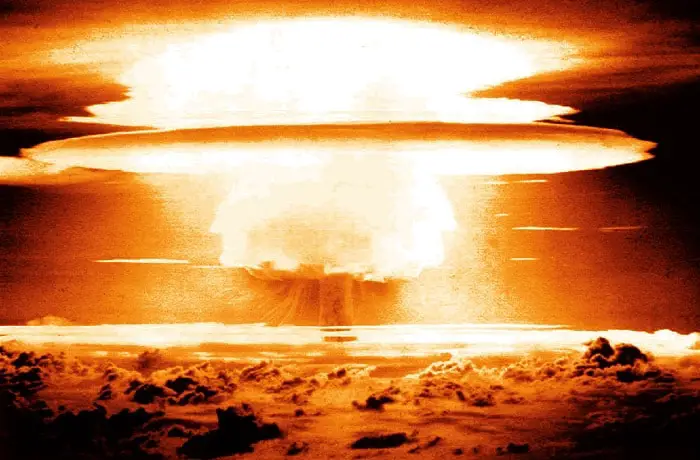
Thermonuclear weapons or simply the hydrogen bomb is based on the principle of an uncontrolled chain reaction where energy is harnessed by combining isotopes of hydrogen under extremely high temperatures and pressure density to form a helium nucleus.
Controlled Chain Reaction in Nuclear Fusion
According to the nuclear energy definition, when the energy is slowly produced by fusing atoms in a controlled or sustained environment, a process in the world of physics is known as a controlled chain reaction in nuclear fusion.
Although, research on the commercialization of the nuclear fusion-powered plant has been going on since 1940s. Yet, a reactor that can sustain a controlled nuclear fusion is still in its development phase.
Applications of Nuclear Fusion in Everyday Life
If you think you can’t relate to applications of nuclear fusion in our everyday life. Well, here is your chance to think again!
- Thermonuclear weapons
- The sun shines due to the process of nuclear fusion, etc.
Advantages of Nuclear Fusion
Here is a list of some of the advantages of nuclear fusion reaction.
- Nuclear fusion enhances national security.
- There is no threat of accidents during the process of nuclear fusion reaction.
- There is no burden of handling radioactive materials.
- A most reliable source of energy.
- Unlimited amount of nuclear fuel i.e hydrogen.
- The process of nuclear fusion helps us to reduce greenhouse gas emissions, etc.
Disadvantages of Nuclear Fusion
Here is a list of some of the disadvantages of nuclear fusion reaction.
- A real threat of nuclear war.
- This process requires a very large amount of energy to fuse atoms as compared to a nuclear fission reaction.
- The process of nuclear fusion requires very high temperature and high-pressure density to fuse atoms.
- Moreover, it requires a lot of resources and money to build a fusion reactor.
That’s it for this post. If you like this article, share it if you like, like it if you share it. You can also find us on Mix, Twitter, Pinterest, and Facebook. Hey man, If you have come this far, do give us feedback in the comment section. It would make my day. You can also make a donation. Your donations will help us to run our website and serve you BETTER. Cheers!!!
You might also like:
- Difference Between Kinetic and Potential Energy in Tabular Form
- Difference Between Conductors and Insulators in Tabular Form
- Volt vs Ampere – Difference and Comparision
- Top 6 Different Types of Energy with Their Examples (All New)
- Why my Top 6 Advantages of Nuclear Energy are BETTER than Yours?